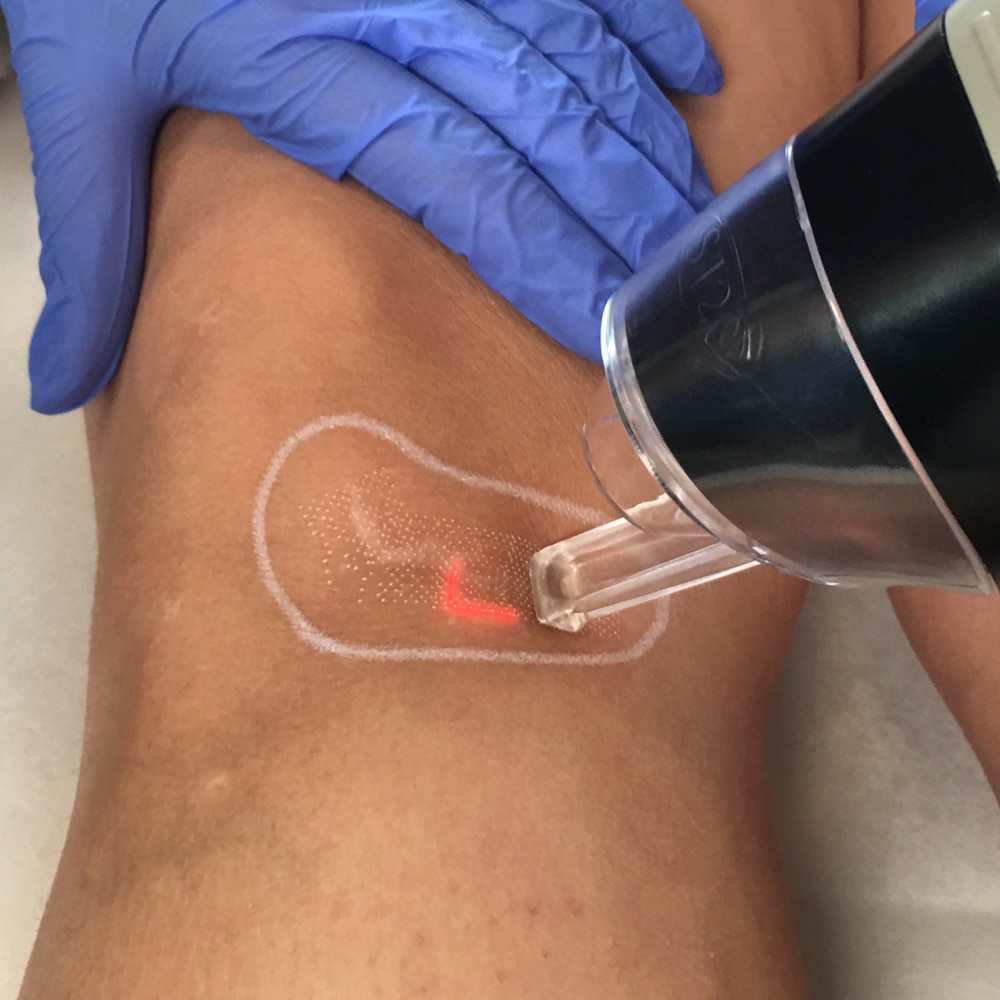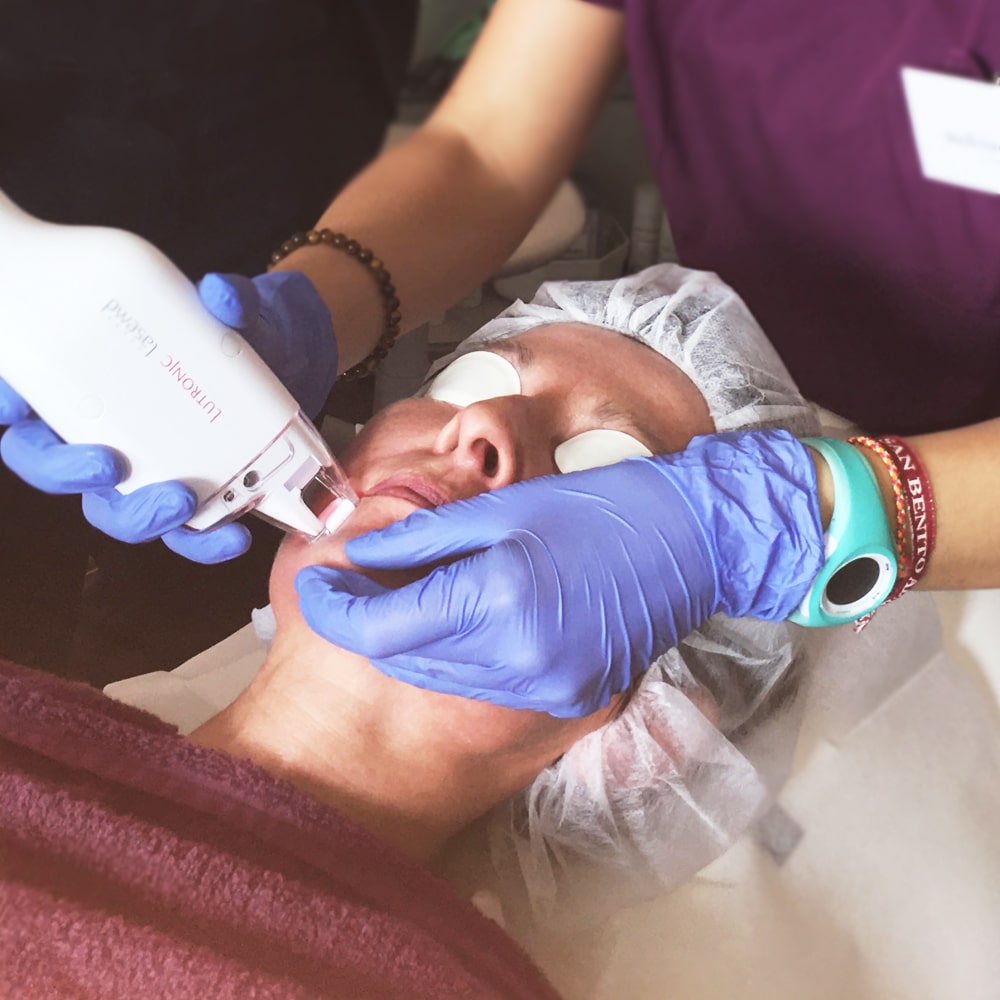Scars can be distressing for many people. Whether they are scars from severe acne, surgery, burns or accidents, they tell a story of past injuries. However, in this day and age, we have access to advanced techniques to significantly improve the appearance of scars. This includes incision scars and stretch marks. In this comprehensive guide, we will look at scar treatment using fractional laser systems and explain the different options and the treatment process in more detail.
What types of scars can be treated with a laser?
The good news is that many types of scars can be treated using laser technology. These include:
1. surgical scars
Scars that remain after surgical procedures can often be improved with laser treatments. This applies to both minor procedures and major operations such as caesarean sections. Surgical scars can be flat and inconspicuous or raised and visible. The choice of laser approach depends on the type of surgical scar.
2. acne scars
Acne scars are a common problem that affects many people. Fortunately, laser treatment can significantly improve the appearance of acne scars. Acne scars can take various forms, including sunken, wavy or angular structures. The type of acne scar will influence the choice of the most suitable laser.
3. burn scars
Burn scars can be particularly distressing as they are often extensive and conspicuous. This is where laser therapy can achieve significant improvements. Burn scars can vary in depth and extent, so an individual assessment is required to choose the most appropriate laser treatment. For the often very severe itching, we recommend AWT.
4. scoring scars
Scars caused by self-harm or scratching can also be treated to minimize their visibility. Scratch scars are often deep and irregular. Laser treatment can help to smooth and improve the appearance of these scars.
5. stretch marks
Stretch marks, also Stretch marks are a common problem after pregnancy. Laser technologies can help to improve the appearance of the skin. Stretch marks are usually flat and can be pink, red or silver-white in color. Laser treatments can help improve the color and texture of these scars as well as make them appear slightly thinner.
6. accident scars
Scars caused by accidents and injuries can also be treated. The type of accident scar can vary greatly depending on the type of injury. From cuts and lacerations to bruises and sprains, accident scars can have different shapes and textures.
It is important to note that not all scars are the same, and the type of scar and its location play a crucial role in choosing the best treatment method. Your dermatologist or skin expert will conduct a thorough examination to recommend the most appropriate approach for your individual needs.
What laser options are available for scar treatment?
There are different types of lasers that can be used for scar treatment. Here are some of the most common:
1. ablative fractional lasers
Ablative fractional lasers such as the CO2 laserErbium lasers and thullium lasers work by creating tiny, microscopic holes in the skin. This promotes the body's natural healing response and the production of collagen, resulting in smoother skin. This type of laser works well for deep scars, including acne scars and surgical scars.
The CO2 laser is particularly effective in the treatment of acne scars. It removes tiny areas of skin and stimulates collagen production to improve skin texture. This laser requires a longer recovery time as the skin surface is heavily resurfaced.
The Erbium laser is gentler than the CO2 laser and is well suited to treating fine lines and shallow scars. It removes less skin, resulting in faster healing. This laser is ideal for treating light acne scars and light wrinkles.
3. radiofrequency (RF) and microneedling RF
Radio frequency and Microneedling RF are innovative techniques for scar treatment. In RF treatment, radio waves are emitted into the skin to stimulate collagen production and improve skin structure. Microneedling RF, on the other hand, uses tiny needles to create micro-injuries in the skin and deliver the RF directly deep into the skin.
These techniques are particularly effective in treating deep acne scars, stretch marks + red surgical scars. They are also less invasive than some of the laser options and usually require less downtime.



The process of scar treatment with laser
Treating scars with laser is usually a multi-step process. Here's what you can expect:
1. evaluation and planning
To begin with, your dermatologist or skin expert will carry out a thorough examination of your scars. This will include an assessment of their type, size, depth and location. Based on this assessment, a personalized treatment plan will be created.
2. preparation of the skin
Before the laser treatment, the skin is usually cleansed and usually treated with an anesthetic cream.
3. laser treatment
During the actual treatment, the laser is guided over the affected areas of skin. Depending on the type of laser and the scars, tiny holes are created or radio waves are emitted into the skin. This can feel like a slight tingling or prickling sensation.
4. aftercare
After the treatment, the skin is cooled and soothed. In the days following the treatment, you should avoid direct sunlight and use special creams to support healing. Occasionally there may be temporary redness and swelling, but this usually subsides within a few days.
5. several sessions
Most people need several sessions to achieve optimal results. The number of sessions will depend on the type and depth of the scars. Your dermatologist will monitor progress and adjust treatments accordingly.
6. evaluation of the success of the therapy
The success of the treatment is assessed on the basis of photo documentation. It is realistic to aim for an improvement of at least 50% in the appearance of your scars in 3-6 sessions. Actual results may vary depending on the individual case.
Costs of scar treatment with laser
The cost of laser scar treatment can vary and depends on a number of factors, including the location of the treatment, the laser used and the extent of the treatment. It is best to consult your dermatologist or skin expert for exact costs.
Conclusion
Laser scar treatment is an advanced method to significantly improve the appearance of scars. With different laser options, customized treatment plans and careful aftercare, you can achieve smoother and more even skin. Keep in mind that choosing the right procedure and number of sessions will depend on the type of scars you have. Always consult a dermatologist or skin expert to determine the best options for your needs. Your journey to more beautiful skin and increased self-confidence can start with the right treatment.



